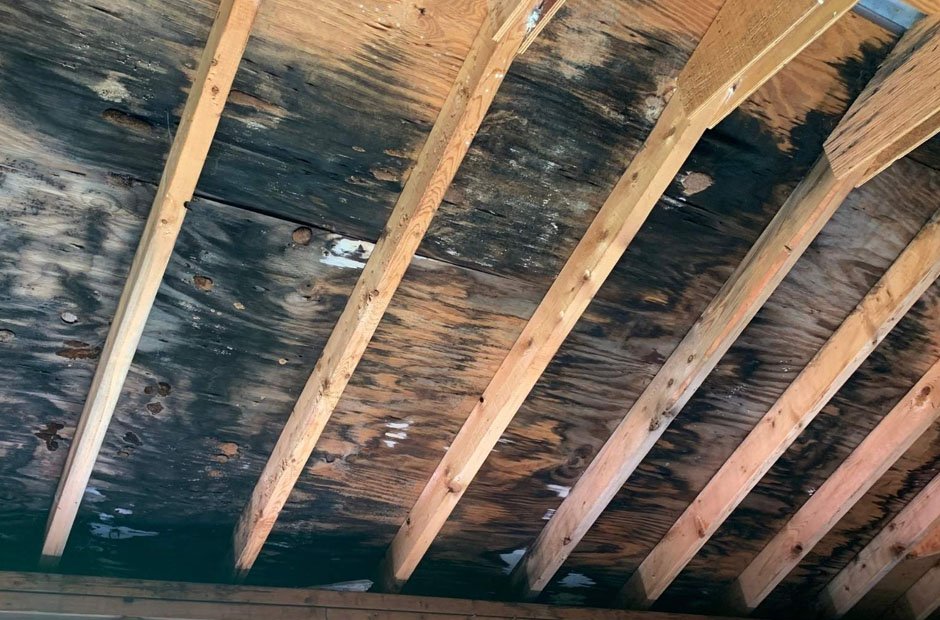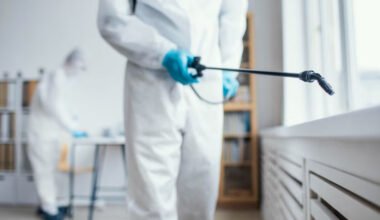Why Mold Loves Crawl Spaces
Crawl spaces are especially vulnerable to excess moisture due to poor ventilation, groundwater seepage, and undetected plumbing leaks. Over time, this trapped moisture can lead to structural deterioration, foul odors, and compromised air quality throughout the home. Insulation and wooden framing often absorb the excess water, creating long-term issues that may go unnoticed until serious damage occurs. In such cases, professional water damage repair services are essential to assess the extent of the damage, remove excess moisture, and prevent further deterioration.
Homeowners should take musty odors or dampness under their home seriously, even if there’s no visible mold, as even minor signs should prompt an inspection. For those unfamiliar with safe removal protocols or facing more than minor contamination, enlisting professional mold remediation services is highly recommended. Specialists can identify hidden issues, use drying equipment, and use safe cleaning methods to protect crawl spaces from future outbreaks, ensuring a targeted cleanup rather than a major renovation.
Why Rapid Response is Critical
Mold spreads quickly, establishing colonies within 24 to 48 hours under optimal conditions. If left unaddressed, spores can spread into living areas. Persistent moisture in crawl spaces provides a steady supply of nutrients, making it a stubborn source of contamination. Early action is crucial, as contained patches are easier and less costly to remediate than full-blown infestations. Early detection tips include inspecting the space seasonally, noticing moldy odors, and visually checking for speckled patterns. Additionally, considering the health of the household and investing in a digital hygrometer can help identify mold.
The Consequences of Delayed Mold Treatment
Delaying mold treatment poses significant risks to a property’s structure and inhabitants. Spores weaken organic building materials, causing sagging floors and foundation issues. Moisture and mold attract insects and rodents, making vulnerable individuals like infants, seniors, and those with allergies or compromised immune systems. Black mold produces toxins, creating hazardous indoor environments. Waiting often leads to costly repairs and disrupted living.
Immediate Steps for Fast Containment
To prevent mold growth in crawl spaces, identify the water source and seal or repair it immediately. Remove wet items to eliminate mold’s food supply. Boost ventilation by opening access doors, removing debris around vents, or using mechanical fans and air movers. Dehumidify the space to lower moisture levels and prevent mold spores from regrowing. Apply EPA-approved cleaning solutions for small infestations, wearing gloves and masks to avoid inhaling spores or irritants. Monitor progress by checking for returning moisture or lingering odors to ensure conditions remain dry and clean.
Routine Maintenance for Healthy Crawl Spaces
Mold in crawl spaces is not easily controlled with DIY cleaners or cleaners. Professional mold remediation teams are essential for areas over ten square feet, difficult-to-clean materials, or recurring infestations. They can dry, clean, and sanitize crawl spaces while controlling spore dispersal. They can address underlying issues like hidden plumbing leaks, inadequate drainage, or HVAC contamination. Professional help is mandatory for those with allergies, asthma, or immune suppression.
When to Call for Professional Help
Mold in crawl spaces is not easily controlled with DIY cleaners or cleaners. Professional mold remediation teams are essential for areas over ten square feet, difficult-to-clean materials, or recurring infestations. They can dry, clean, and sanitize crawl spaces while controlling spore dispersal. They can address underlying issues like hidden plumbing leaks, inadequate drainage, or HVAC contamination. Professional help is mandatory for those with allergies, asthma, or immune suppression.



